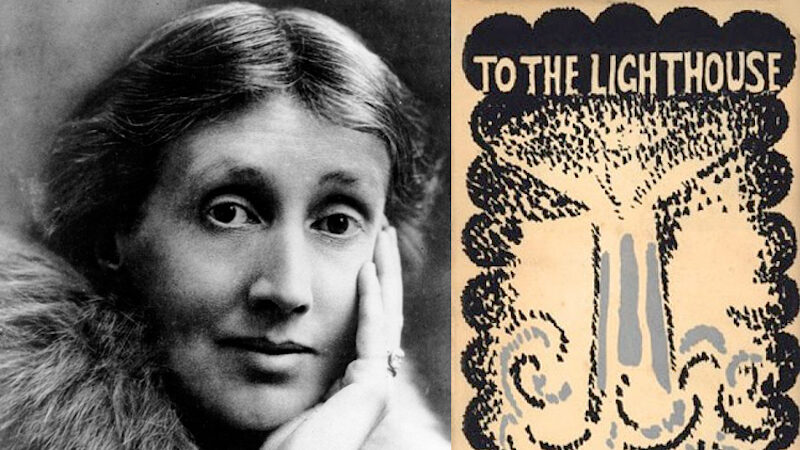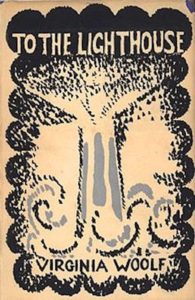

What is the meaning of life? That was all- a simple question; one that tended to close in on one with years, the great revelation had never come. The great revelation perhaps never did come. Instead, there were little daily miracles, illuminations, matches struck unexpectedly in the dark; here was one.
*
“The method of Mrs. Dalloway is substantially retained by Mrs. Woolf in this new novel, To the Lighthouse, but though one encounters again her strikingly individual mingling of inward though with outward action in which the ‘stream of consciousness’ style is liberated from its usual chaos and by means of selection and a sense of order, made formally compact–one finds the method applied to somewhat different aims.
…
“To the Lighthouse is a book of interrelationships among people, and though there are major and minor characters, the major ones are not, as Clarissa Dalloway was, the alpha and omega of the story, but more truly the means for giving to the story its harmony and unity, its focal points. Those who reject To the Lighthouse as inferior to Mrs. Dalloway because it offers no one with half the memorable lucidity of Clarissa Dalloway must fail to perceive its larger and, artistically, more difficult aims. They must fail to notice the richer qualities of mind and imagination and emotion which Mrs. Woolf, perhaps not wanting them, omitted from Mrs. Dalloway. They must fail to appreciate that as an author develops he will always break down the perfection he has achieved in an earlier stage of his writing in order to reach new objectives.
…
“It is the final portion of the book which is most perplexing. It seems to sound in the minor what the long first portion sounded in the major, to persist as an ironical mood, to re-establish a scene with the sorry changes time has wrought, to reduce a symbolical achievement when it is finally made to the level of negation. The long opening portion seems to be carrying you ahead toward something which will be magnificently expressive, and then this final portion becomes obscure, a matter of arcs, of fractions, of uncoordinated notes. By comparison with the rest this final portion seems pale and weak. Perhaps there is a reason for this, perhaps Mrs. Woolf meant to show that with Mrs. Ramsay’s death things fall apart, get beyond correlation. Mr. Ramsay is no longer interesting–can it be because he is no longer counterpoised against his wife? Life seems drifting, as the Ramsays drift over the bay in their boat, and all their physical vigor and all their reaching of the lighthouse at last conveys no significance.
The truth is that this final portion of the book strikes a minor note, not an intentional minor note which might still in the artistic sense be major, but a meaningless minor note which conveys the feeling that one has not quite arrived somewhere, that the story which opens brilliantly and carries on through a magnificent interlude ends with too little force and expressiveness.
At any rate the rest of the book has its excellencies. Like Mrs. Dalloway it is underlaid with Mrs. Woolf’s ironic feeling toward life, though here character is not pitted against manners, but against other character. Once again Mrs. Woolf makes use of her remarkable method of characterization, a method not based on observation or personal experience, but purely synthetic, purely creational. Clarissa Dalloway is a marvelous synthesis, and it is just for that reason that Mrs. Dalloway, which has been identified because of its modernity with the Ulysses school, differs from it in character fundamentals, for it is as objective as Ulysses is autobiographical and observational. There is nothing ‘photographic’ about Mrs. Woolf’s characters, here or in Mrs. Dalloway. Neither Clarissa nor Mrs. Ramsay has anything autobiographical about her; both are complete creations and both, for all their charm and graces, must suffer a little beneath the searchlight of Mrs. Woolf’s independently used mind and sense of irony.
In To the Lighthouse there is nobody who even approaches Clarissa Dalloway in completeness and memorability, but on a smaller and perhaps more persuasive scale Mrs. Ramsay achieves powerful reality. The other characters are not fully alive because they are not whole enough. Most of them are one-dimensional fragments that have been created with great insight but insufficient vitality. They have minds, moods, emotions–but they get all three through creative intellect. For passion Mrs. Woolf has no gift–her people never invade the field of elementary emotions: they are hardly animal at all.
…
“To the Lighthouse has not the formal perfection, the cohesiveness, the intense vividness of characterization that belong to Mrs. Dalloway. It has particles of failure in it. It is inferior to Mrs. Dalloway in the degree to which its aims are achieved; it is superior in the magnitude of the aims themselves. For in its portrayal of life that is less orderly, more complex and so much doomed to frustration, it strikes a more important note, and it gives us an interlude of vision that must stand at the head of all Virginia Woolf’s work.”
–Louis Kronenberger, The New York Times, May 8, 1927

